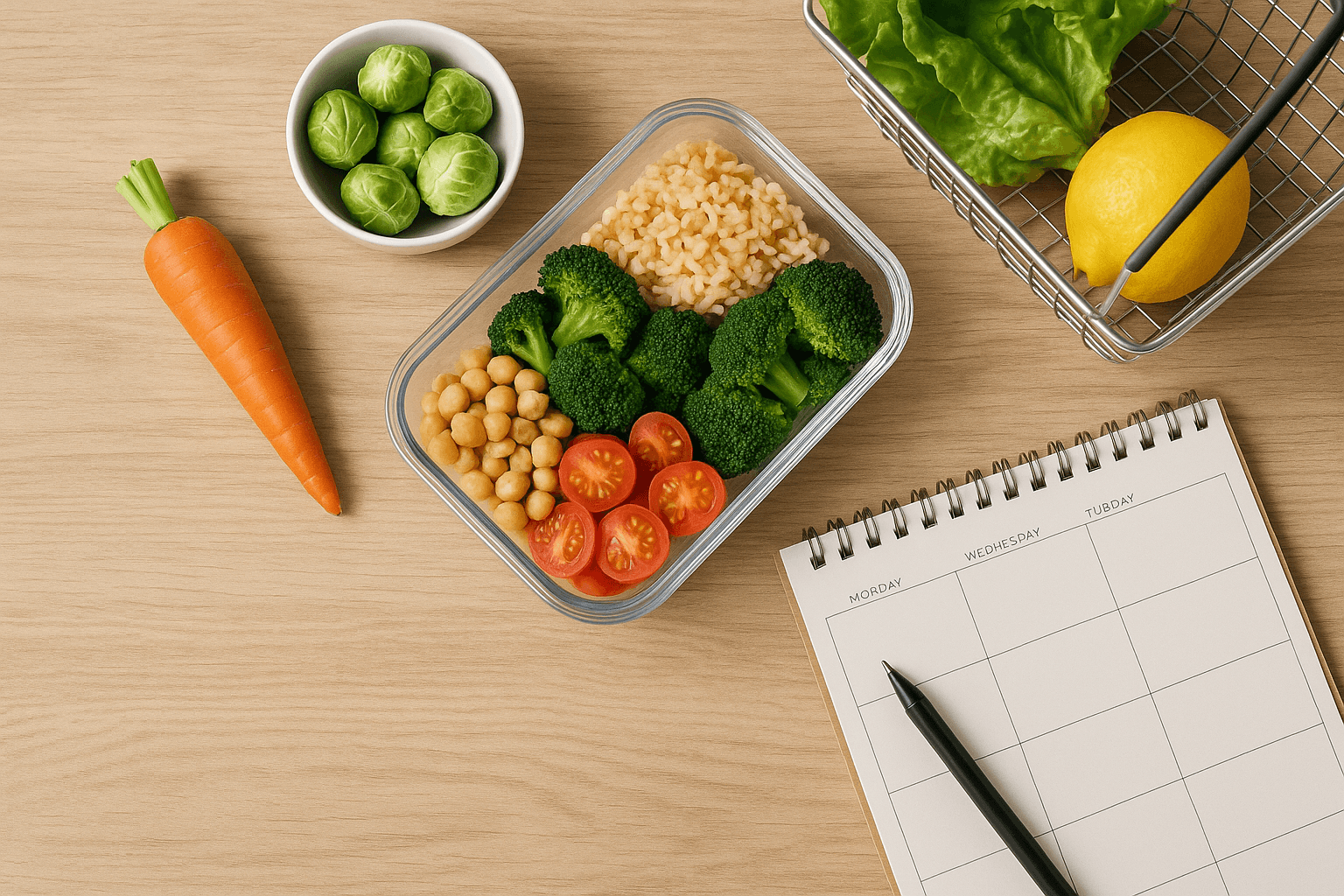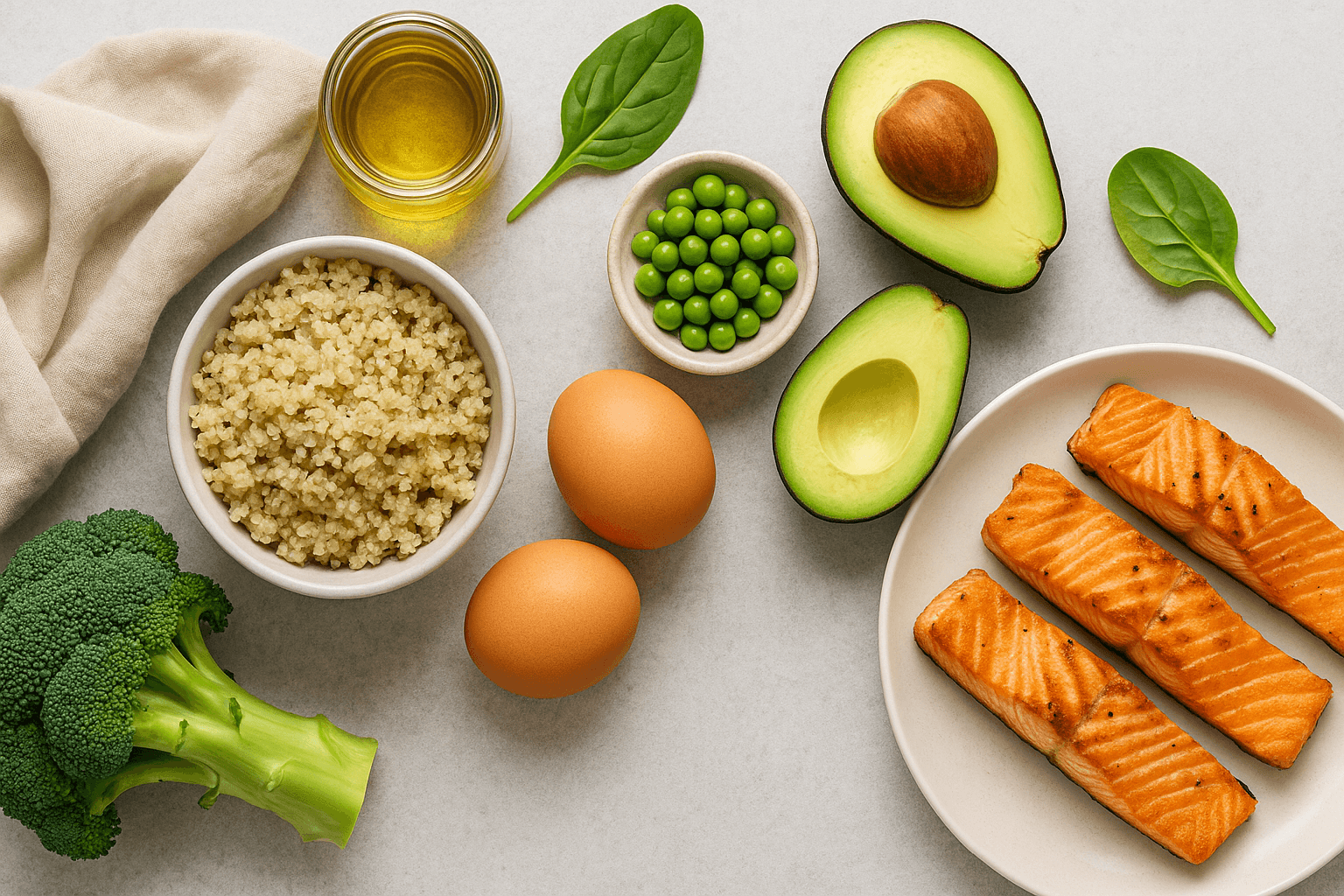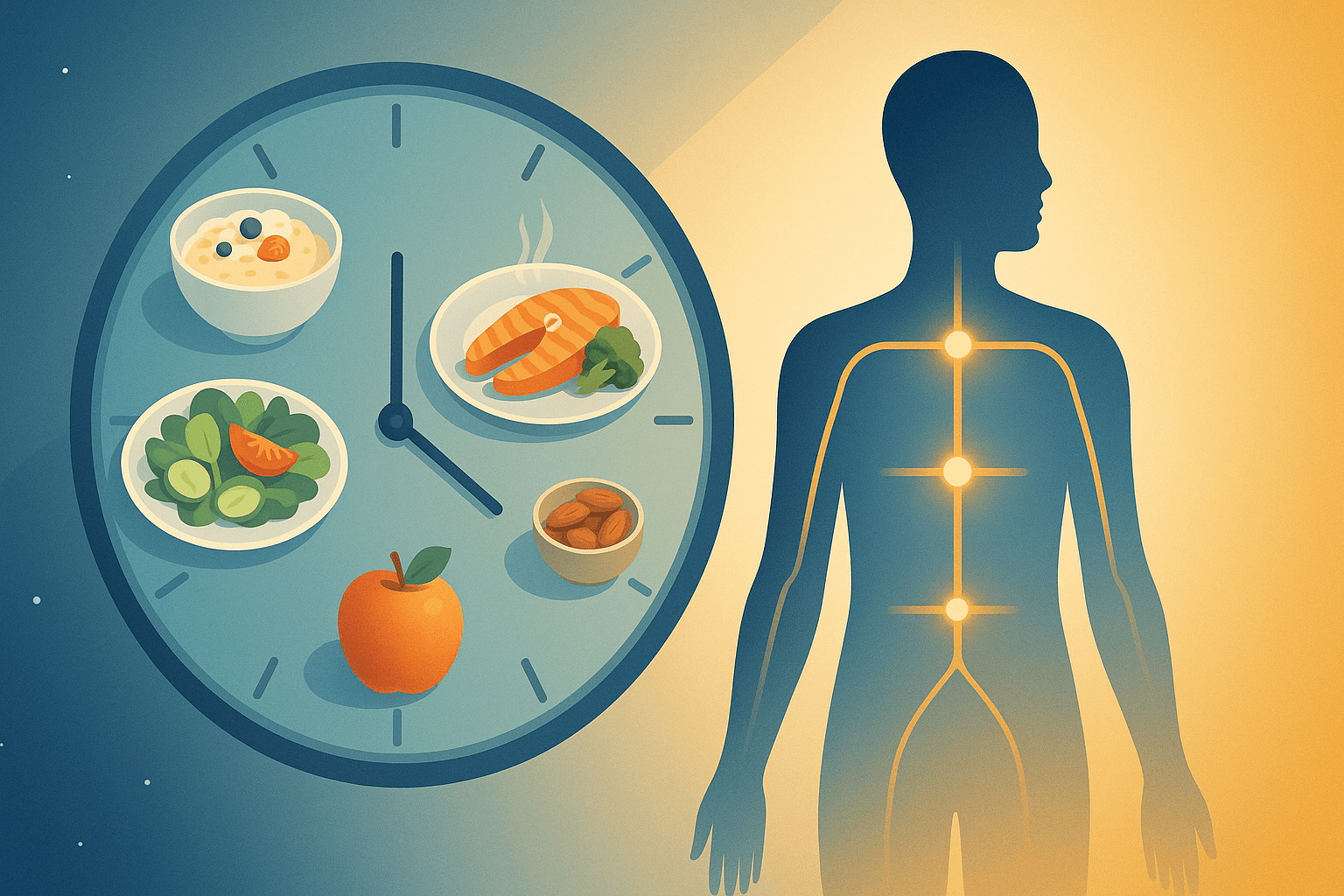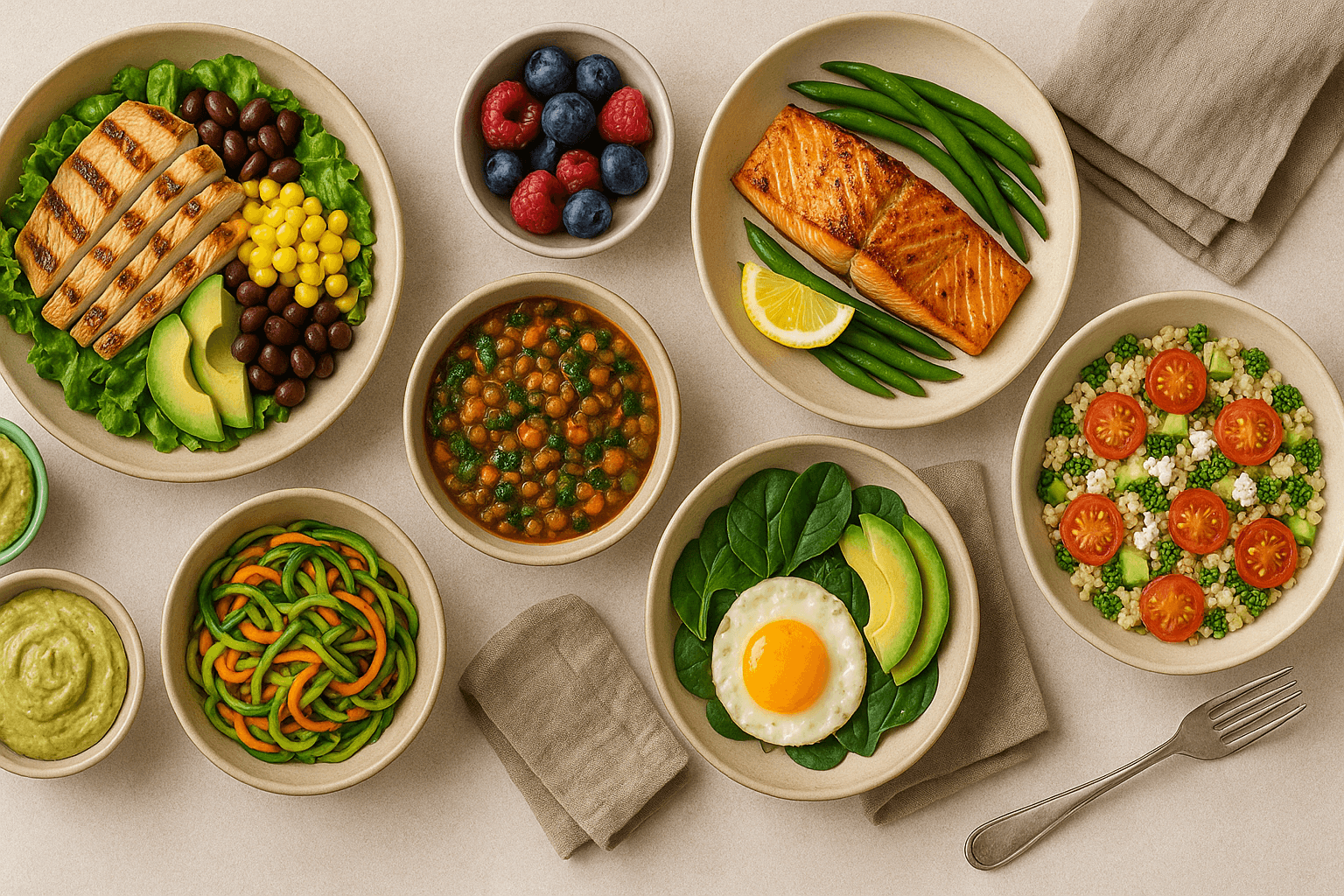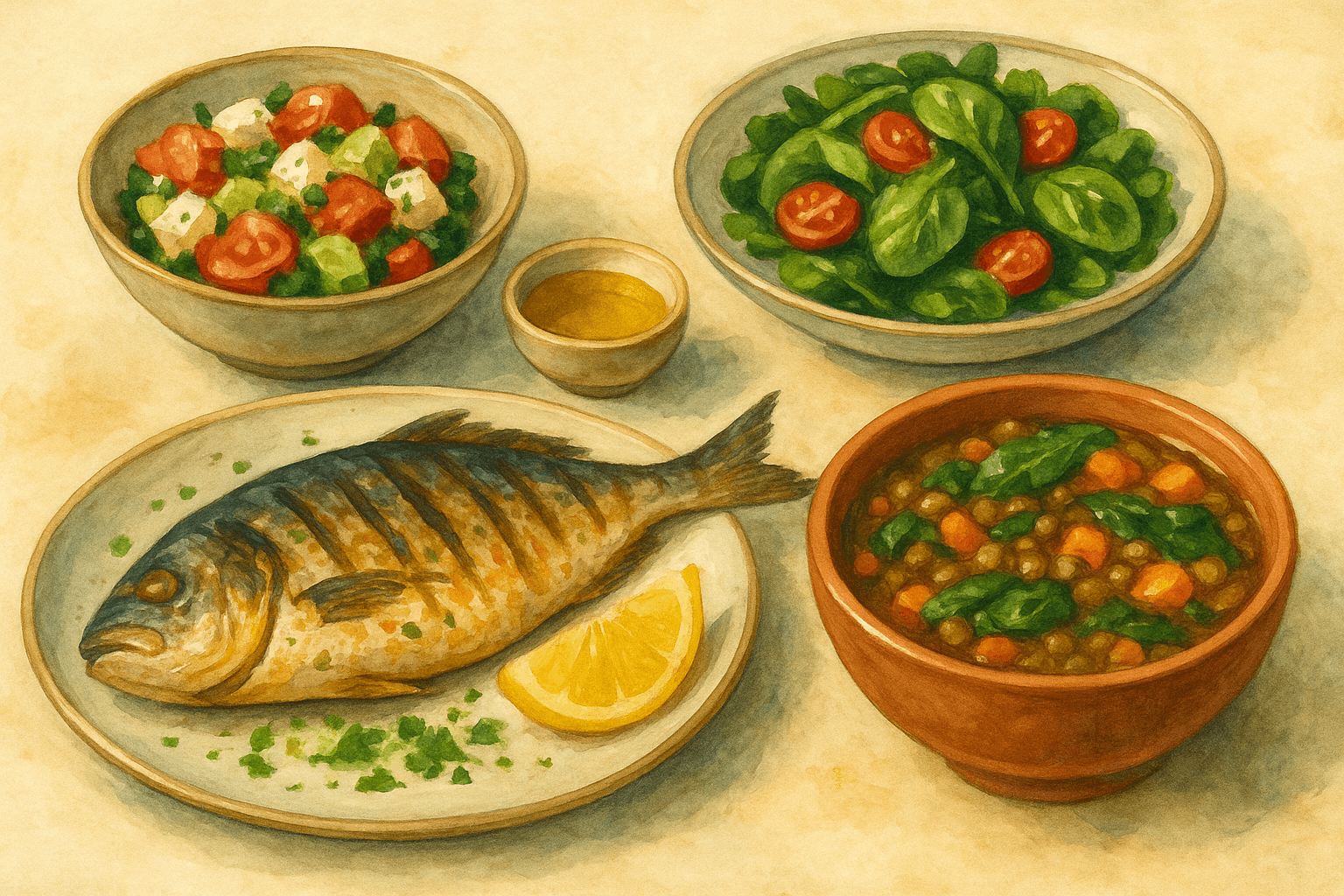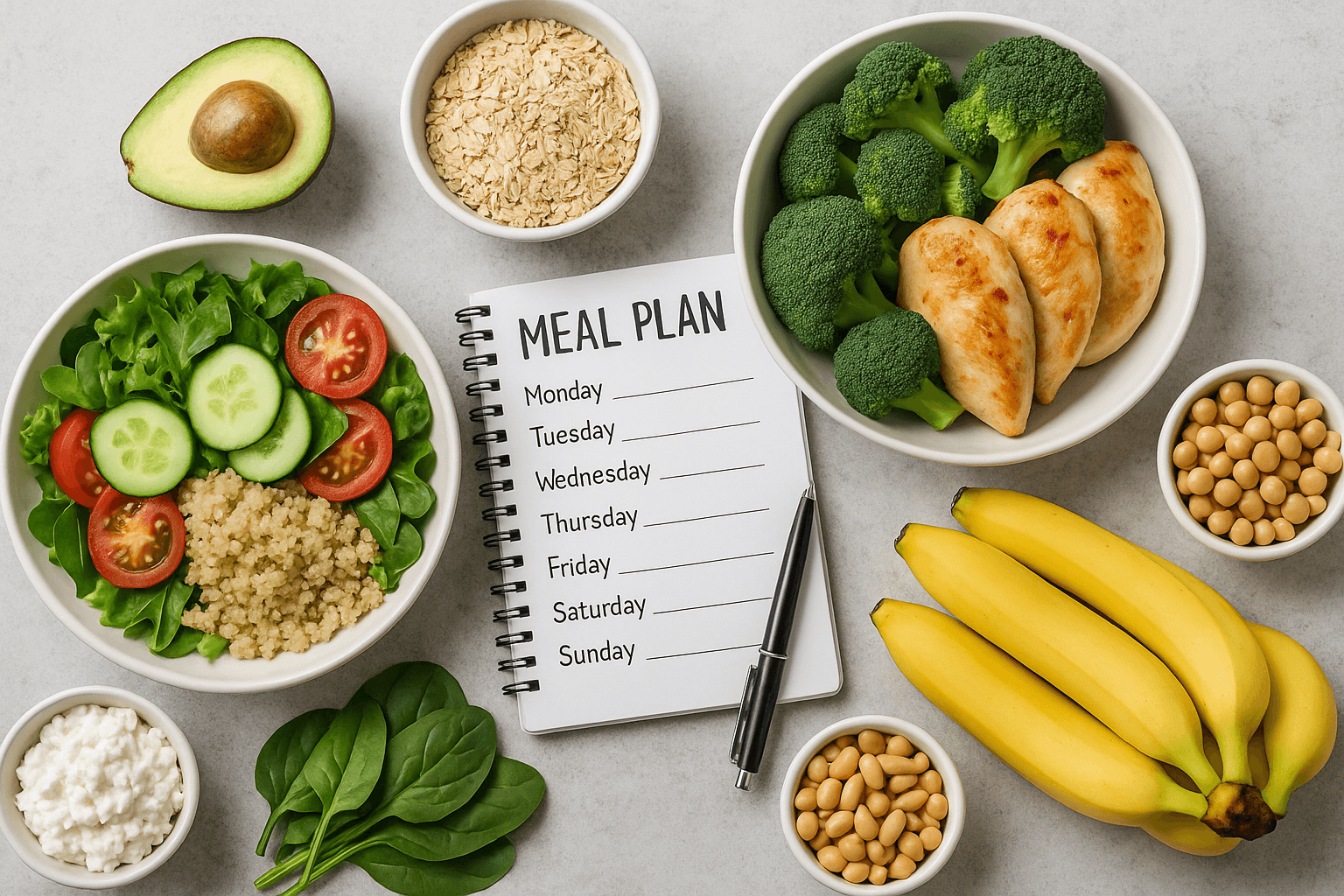MEAL PLANNING UNLOCKED: YOUR PRACTICAL, SCIENCE-BACKED GUIDE TO STRESS-FREE, NOURISHING, AND FLEXIBLE EATING
Published on July 26, 2025
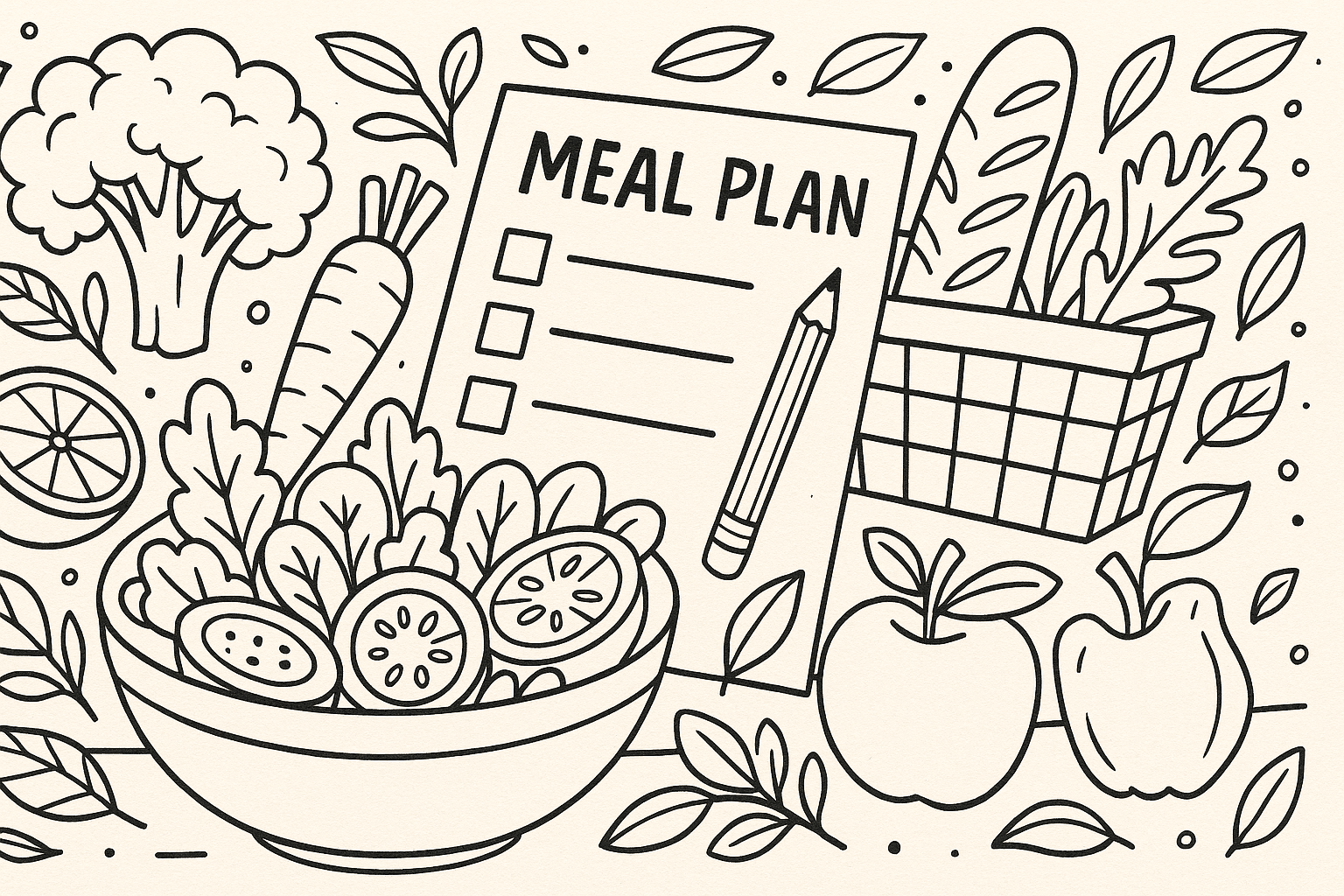
Let’s face it: when most people hear the term “meal planning,” they groan. Perhaps you envision rigorous color-coded calendars affixed to the refrigerator
rows upon rows of containers perfectly arranged
a shopping list as long as multiple carts
But here’s the secret every seasoned healthy eater eventually learns — meal planning, when it’s done well, is a bonafide life hack
It’s not a matter of control or perfection
It’s about finding ease and pleasure and flexibility in your food routines
so you can nourish your body, save your sanity, and yes, reclaim a small sliver of joy in the kitchen
Whether you’re a busy parent with soccer games and dance practice around every corner
a professional going from meeting to meeting
a student balancing classes and a job
or just someone who wants to eat healthier without spending your whole paycheck and without losing your mind
meal planning can help
And it’s about building a system that puts you in the best position to succeed — rather than just operating on autopilot or stuck in a rut
With some simple strategies and an open mind, you’ll see that planning meals can expand your culinary freedom and pleasure, not limit it
Why You Should Be Meal Planning (and how it will change your life)
Frustrating and humbling, yes, but I believe I know how that happens to nearly all of us: Facing an open refrigerator at dinnertime, hungry, tired and staring into the abyss of “nothing to eat.”
This is how takeout occurs
how snacking occurs and how healthful choices fly out the window
This is where a good meal plan turns that chaos into order
Saves Time:
With a meal plan, you won’t have daily runs to the store or panic when asking, “what’s for dinner?” stress
You can shop twice as fast and wonder half as much, and live twice as much
Reduction in Stress
Decision fatigue is a thing! When the meals are planned, you free up mental space for thoughts on what matters more
Improves Nutrition:
When you plan, you’re a whole lot more likely to get a variety of more veggies, whole grains, and healthy proteins onto your plate, and you’re going to taste stuff — getting over that default pasta-pizza-bread rut
Reduces Food Waste and Saves Money:
Meal planning creates an intention to everything you are purchasing and consuming
You buy what you need, you use it, you don’t let good food go to waste
Less impulse buying and more using what’s already in your kitchen means you spend less on groceries
Works with Any Goal:
Whether you want to lose weight, manage blood sugar, build muscle, enjoy more plant-based options or just feel more energetic, meal planning can help you be successful
Start Here How to Meal Plan Without Going Crazy
Here’s the secret: You don’t have to plan every meal and snack that will get you through the next month in order to reap the benefits
Actual meal planning is flexible, forgiving and tailored to your actual life — not your imaginary magazine life
Know Your “Why”:
Start with your purpose
Or would you just like to save time, eat better, reduce stress or experiment with new recipes?
Your why will design your system and drive you
Choose a Planning Period:
Many people can handle weekly plans, but if that feels overwhelming, start with just three dinners
As you become more proficient you may want to increase to lunches and breakfasts, then to an entire week at a time
Make a Favorites List:
Write down 10–15 meals you love on a piece of paper or the notepad in your phone
These may be as basic as “stir-fry with whatever veggies are in the fridge” or “omelet and toast.”
This trusty menu bank reduces overwhelm while allowing you to rotate old faves with new finds
Check Your Calendar:
Examine your week — if you’re flying, pack quickly prepared or make-ahead meals
if you're sedate, you might be ready for something new or involved
And don’t forget to account for nights of takeout, leftovers or eating out
Inventory What You Have:
Look in your fridge, freezer and pantry before you make a plan
Construct meals around what you already have — that half-bag of spinach, the lonely can of beans, the sweet potatoes you were going to roast last week
Build a Realistic Grocery List:
Sort by category (produce, dairy, protein, grains) to expedite your trip
Don’t be afraid to substitute ingredients to pick up things on sale or in season — you’re the boss!
5 Types of Meal Prep: finding what’s best for you
There is no correct way to meal plan — so mix and match dependent on your mood, the week or the family you’re feeding
Weekly Planner:
Schedule 5-7 dinners and then rotate through breakfasts (overnight oats, egg cups), lunches (sandwich options, salads, soups.)
Prep some basics (grains, proteins, roasted veg) to make meal assembly as quick as a batch
Batch Cooking/Meal Prep:
Designate one day to cook large in advance quantities of rice, beans, chicken, roasted veggies
Divide into containers for grab-and-go lunches and easy dinners
Works great for time-crunched days, or those who are “set it, and forget it” types
Theme Nights:
Theme it up, keep it fun — Meatless Monday, Taco Tuesday, Stir-Fry Friday, Soup Sunday
It helps to keep planning upbeat and family members engaged
Flexible/Minimal Planning:
Not a fan of schedules? Plan only three meals for the week and play the rest by ear, using staples and leftovers
The idea is to make this easier, not harder
Behind the balanced-meal-plan anatomy
The best meal plans are all about diversity, color, and nourishment — and don’t skimp on taste or satisfaction
Here’s what to include
Protein:
Switch it up — chicken, fish, tofu, beans, lentils, eggs, Greek yogurt, lean meats or plant-based options
Whole Grains/Starchy Veggies:
Brown rice, quinoa, oats, sweet potatoes, whole wheat pasta, barley, corn
Vegetables:
If you can get lots of color, texture and flavor on your plate, don’t worry so much about fresh vs. frozen
Good Fats:
Avocado, nuts and seeds, olive oil, and nut butters keep you feeling full
Fruits:
Incorporate them into snacks, breakfasts and even desserts for all natural sweetness, fiber and vitamins
Treats:
Plan for pleasure! Chocolate, a beloved pastry or family pizza night—enjoyed mindfully—are absolutely a part of a sustainable and happy relationship with food
The Plate Method:
Imagine half your plate is filled with veggies, a quarter protein, and a quarter whole grains or starchy veggies, with a drizzle of healthy fat and a serving of fruit
Real-Life Meal Planning: A Peek at a Typical Week
Breakfasts:
Overnight oats mixed with berries, walnuts and a little bit of cinnamon
Greek yogurt topped with fruit, seeds and a drizzle of honey
Spinach-tomato scrambled eggs and whole-grain toast
A smoothie with banana, kale, peanut butter and flaxseed
Lunches:
Quinoa and chickpea salad with cucumbers, tomatoes, feta and olive oil
Wraps filled with turkey and avocado, a side of baby greens, and carrot sticks
Crispy tofu brown rice bowl with sesame dressing and steamed broccoli
Extra veggie chili or homemade lentil soup
Dinners:
Boneless grilled chicken with roated sweet potato and steamed brococoli
Salmon baked with brown rice and asparagus
Chili no carne with kidney beans, peppers, corn and cornbread
Snow peas, bell peppers, brown rice, and stir-fried shrimp
Veggie-heavy, light-on-the-cheese whole-wheat pizza night
Lentil soup with a big green salad
A zucchini tomato pea basil loaded pasta primavera
Snacks:
Apple slices with peanut butter
DIY trail mix (nuts, seeds, dried fruit)
Bell pepper strips with hummus
Yogurt w/berries and a dash of chia seeds
Troubleshooting: Overcoming Meal Planning Hurdles
“I just get tired of eating the same stuff.”
Include a new recipe weekly, have fun with global flavors or try out new sauces and seasonings to keep it exciting and fun
“I don’t have time to cook.”
It can be as simple as batch cooking grains and proteins on weekends, loading up on healthy frozen meals or store-bought rotisserie chicken or making fast recipes on weeknights
“Family is picky.”
Serve “build your own” dishes like tacos, grain bowls, or DIY pizza and each person gets a customized meal they enjoy
“It feels expensive.”
Plan meals based on what’s on sale, purchase pantry staples in bulk, and get the most mileage from frozen fruits and veggies
How to plan meals for special diets and goals
Weight Loss:
SinglesLoad up on lots of vegetables, lean protein, portion-controlled snacks, and plan for treats, so you don’t feel deprived
Build mass:
Base meals around protein and healthy carbohydrates, include energy-dense snacks and eat in sync with workouts for optimum recovery
Vegetarian/Vegan:
Rotate plant proteins (beans, lentils, tofu, tempeh), experiment with different grains, and pay attention to nutrients such as B12, iron and calcium
Diabetes/Heart Health:
Focus on high-fiber carbs, lean proteins, healthy fats, and cut back on added sugar and salt
Transforming Meal Planning Into A Lasting Habit
Start small. Plan three dinners this week, or bring two lunches to work. Create a “favorites” list and come back to it! Involve the whole household and make planning a weekly routine — perhaps with a family meeting, music, or snacks
Remember, meal planning is not about being rigid. It’s a way of helping your later self out — making those healthy, happy choices easy and automatic. Appreciate small victories, be adaptable and turn meal planning into your own superpower for enjoying food and life, each and every day
Closing Thoughts: Meal Planning Is Your Superpower
A great meal plan is so much more than a menu, it is the key to eating well, being more relaxed around meal times, and finding a little more joy each day. It is how you nourish yourself, time manage and budget (if cooking is a pressure not a pleasure). Begin basic, continue to learn, and let your meal plan evolve. Every meal you prepare is a gift to your future self — a tasty reminder that you’re one step closer to your healthiest, happiest life
Let’s face it: when most people hear the term “meal planning,” they groan. Perhaps you envision rigorous color-coded calendars affixed to the refrigerator, rows upon rows of containers perfectly arranged, a shopping list as long as multiple carts. But here’s the secret every seasoned healthy eater eventually learns — meal planning, when it’s done well, is a bonafide life hack. It’s not a matter of control or perfection. It’s about finding ease and pleasure and flexibility in your food routines, so you can nourish your body, save your sanity, and yes, reclaim a small sliver of joy in the kitchen.
Whether you’re a busy parent with soccer games and dance practice around every corner, a professional going from meeting to meeting, a student balancing classes and a job, or just someone who wants to eat healthier without spending your whole paycheck and without losing your mind, meal planning can help. And it’s about building a system that puts you in the best position to succeed — rather than just operating on autopilot or stuck in a rut. With some simple strategies and an open mind, you’ll see that planning meals can expand your culinary freedom and pleasure, not limit it.
Why You Should Be Meal Planning (and how it will change your life) Frustrating and humbling, yes, but I believe I know how that happens to nearly all of us: Facing an open refrigerator at dinnertime, hungry, tired and staring into the abyss of “nothing to eat.” This is how takeout occurs, how snacking occurs and how healthful choices fly out the window. This is where a good meal plan turns that chaos into order: Saves Time: With a meal plan, you won’t have daily runs to the store or panic when asking, “what’s for dinner?” stress. You can shop twice as fast and wonder half as much, and live twice as much. Reduction in Stress Decision fatigue is a thing! When the meals are planned, you free up mental space for thoughts on what matters more. Improves Nutrition: When you plan, you’re a whole lot more likely to get a variety of more veggies, whole grains, and healthy proteins onto your plate, and you’re going to taste stuff —getting over that default pasta-pizza-bread rut. Reduces Food Waste and Saves Money: Meal planning creates an intention to everything you are purchasing and consuming. You buy what you need, you use it, you don’t let good food go to waste. Less impulse buying and more using what’s already in your kitchen means you spend less on groceries. Works with Any Goal: Whether you want to lose weight, manage blood sugar, build muscle, enjoy more plant-based options or just feel more energetic, meal planning can help you be successful. Start Here How to Meal Plan Without Going Crazy Here’s the secret: You don’t have to plan every meal and snack that will get you through the next month in order to reap the benefits. Actual meal planning is flexible, forgiving and tailored to your actual life — not your imaginary magazine life. Know Your “Why”: Start with your purpose. Or would you just like to save time, eat better, reduce stress or experiment with new recipes? Your why will design your system and drive you. Choose a Planning Period: Many people can handle weekly plans, but if that feels overwhelming, start with just three dinners. As you become more proficient you may want to increase to lunches and breakfasts, then to an entire week at a time. Make a Favorites List: Write down 10–15 meals you love on a piece of paper or the notepad in your phone. These may be as basic as “stir-fry with whatever veggies are in the fridge” or “omelet and toast.” This trusty menu bank reduces overwhelm while allowing you to rotate old faves with new finds. Check Your Calendar: Examine your week — if you’re flying, pack quickly prepared or make-ahead meals; if you're sedate, you might be ready for something new or involved. And don’t forget to account for nights of takeout, leftovers or eating out. Inventory What You Have: Look in your fridge, freezer and pantry before you make a plan. Construct meals around what you already have — that half-bag of spinach, the lonely can of beans, the sweet potatoes you were going to roast last week. Build a Realistic Grocery List: Sort by category (produce, dairy, protein, grains) to expedite your trip. Don’t be afraid to substitute ingredients to pick up things on sale or in season — you’re the boss! 5 Types of Meal Prep: finding what’s best for you There is no correct way to meal plan — so mix and match dependent on your mood, the week or the family you’re feeding: Weekly Planner: Schedule 5-7 dinners and then rotate through breakfasts (overnight oats, egg cups), lunches (sandwich options, salads, soups.) Prep some basics (grains, proteins, roasted veg) to make meal assembly as quick as a batch. Batch Cooking/Meal Prep: Designate one day to cook large in advance quantities of rice, beans, chicken, roasted veggies. Divide into containers for grab-and-go lunches and easy dinners. Works great for time-crunched days, or those who are “set it, and forget it” types. Theme Nights: Theme it up, keep it fun — Meatless Monday, Taco Tuesday, Stir-Fry Friday, Soup Sunday. It helps to keep planning upbeat and family members engaged. Flexible/Minimal Planning: Not a fan of schedules? Plan only three meals for the week and play the rest by ear, using staples and leftovers. The idea is to make this easier, not harder. Behind the balanced-meal-plan anatomy The best meal plans are all about diversity, color, and nourishment — and don’t skimp on taste or satisfaction. Here’s what to include: Protein: Switch it up — chicken, fish, tofu, beans, lentils, eggs, Greek yogurt, lean meats or plant-based options. Whole Grains/Starchy Veggies: Brown rice, quinoa, oats, sweet potatoes, whole wheat pasta, barley, corn. Vegetables: If you can get lots of color, texture and flavor on your plate, don’t worry so much about fresh vs. frozen. Good Fats: Avocado, nuts and seeds, olive oil, and nut butters keep you feeling full. Fruits: Incorporate them into snacks, breakfasts and even desserts for all natural sweetness, fiber and vitamins. Treats: Plan for pleasure! Chocolate, a beloved pastry or family pizza night—enjoyed mindfully—are absolutely a part of a sustainable and happy relationship with food. The Plate Method: Imagine half your plate is filled with veggies, a quarter protein, and a quarter whole grains or starchy veggies, with a drizzle of healthy fat and a serving of fruit. Real-Life Meal Planning: A Peek at a Typical Week Breakfasts: Overnight oats mixed with berries, walnuts and a little bit of cinnamon Greek yogurt topped with fruit, seeds and a drizzle of honey Spinach-tomato scrambled eggs and whole-grain toast A smoothie with banana, kale, peanut butter and flaxseed Lunches: Quinoa and chickpea salad with cucumbers, tomatoes, feta and olive oil Wraps filled with turkey and avocado, a side of baby greens, and carrot sticks Crispy tofu brown rice bowl with sesame dressing and steamed broccoli Extra veggie chili or homemade lentil soup Dinners: Boneless grilled chicken with roated sweet potato and steamed brococoli Salmon baked with brown rice and asparagus Chili no carne with kidney beans, peppers, corn and cornbread. Snow peas, bell peppers, brown rice, and stir-fried shrimp Veggie-heavy, light-on-the-cheese whole-wheat pizza night Lentil soup with a big green salad A zucchini tomato pea basil loaded pasta primavera Snacks: Apple slices with peanut butter DIY trail mix (nuts, seeds, dried fruit) Bell pepper strips with hummus Yogurt w/berries and a dash of chia seeds Troubleshooting: Overcoming Meal Planning Hurdles “I just get tired of eating the same stuff.” Include a new recipe weekly, have fun with global flavors or try out new sauces and seasonings to keep it exciting and fun. “I don’t have time to cook.” It can be as simple as batch cooking grains and proteins on weekends, loading up on healthy frozen meals or store-bought rotisserie chicken or making fast recipes on weeknights. “Family is picky.” Serve “build your own” dishes like tacos, grain bowls, or DIY pizza and each person gets a customized meal they



